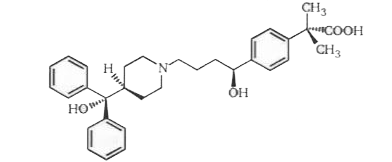Give an example of a seasonal allergy and a perennial allergy.
Step-by-Step Solution:
1. Understanding Seasonal Allergies:
- Seasonal allergies are reactions that occur at specific times of the year, often triggered by environmental changes.
- These allergies are typically linked to pollen from trees, grasses, and weeds, which are prevalent during certain seasons.
2. Example of a Seasonal Allergy:
- A common example of a seasonal allergy is hay fever (also known as allergic rhinitis), which is often caused by pollen from flowering plants in spring and summer.
- Symptoms may include sneezing, itching, nasal congestion, and coughing.
3. Understanding Perennial Allergies:
- Perennial allergies are those that can occur year-round and are not limited to specific seasons.
- These allergies are often triggered by indoor allergens that are present throughout the year.
4. Example of a Perennial Allergy:
- A common example of a perennial allergy is an allergy to house dust mites.
- Other examples include reactions to pet dander, mold, and certain foods, which can cause symptoms like sneezing, runny nose, and itchy eyes at any time of the year.
Summary:
- Seasonal Allergy Example: Hay fever (due to pollen).
- Perennial Allergy Example: House dust mite allergy.
- Seasonal allergies are reactions that occur at specific times of the year, often triggered by environmental changes.
- These allergies are typically linked to pollen from trees, grasses, and weeds, which are prevalent during certain seasons.
- A common example of a seasonal allergy is hay fever (also known as allergic rhinitis), which is often caused by pollen from flowering plants in spring and summer.
- Symptoms may include sneezing, itching, nasal congestion, and coughing.
- Perennial allergies are those that can occur year-round and are not limited to specific seasons.
- These allergies are often triggered by indoor allergens that are present throughout the year.
- A common example of a perennial allergy is an allergy to house dust mites.
- Other examples include reactions to pet dander, mold, and certain foods, which can cause symptoms like sneezing, runny nose, and itchy eyes at any time of the year.
- Seasonal Allergy Example: Hay fever (due to pollen).
- Perennial Allergy Example: House dust mite allergy.
Topper's Solved these Questions
- HEALTH AND HYGIENE: ALLERGYBOOK - ICSECHAPTER - HEALTH AND HYGIENE: ALLERGYEXERCISE - EXERCISES (SECTION II (LONG ANSWER QUESTIONS))
5 Videos
- HEALTH AND HYGIENE: ALLERGYBOOK - ICSECHAPTER - HEALTH AND HYGIENE: ALLERGYEXERCISE - EXERCISES (PICTURE STUDY)
10 Videos
- HEALTH AND HYGIENE: ALLERGYBOOK - ICSECHAPTER - HEALTH AND HYGIENE: ALLERGYEXERCISE - EXERCISES (SECTION II (DIFFERENTIATE BETWEEN THE FOLLOWING))
5 Videos
- CLASSIFICATION OF THE LIVING WORLD BOOK - ICSECHAPTER - CLASSIFICATION OF THE LIVING WORLD EXERCISE - Exercises(Explain in brief.)
12 Videos
- HUMAN BODY: THE EXCRETORY SYSTEMBOOK - ICSECHAPTER - HUMAN BODY: THE EXCRETORY SYSTEMEXERCISE - PICTURE STUDY
9 Videos
Similar Questions
Knowledge Check
Allegra, a common prescription drug with the structure shown below, is given for the treatment of seasonal allergies. How many stereogenic carbon does Allegra possess ?
 A1B2C3D4
A1B2C3D4
Hay fever is a perennial allergy.
View SolutionAllergies caused by dust are perennial allergies.
View SolutionDifferentiate between seasonal and perennial allergies. Give two examples of each.
View SolutionWhat is an allergy? Name the types of allergens.
View SolutionFood allergy is an example of ________ (seasonal/perennial)
View SolutionGive an example of a plant which came into India as a contaminant and is a cause of pollen allergy.
View SolutionGive an example of a plant which came into India as a contaminant and is a cause of pollen allergy.
View Solution
